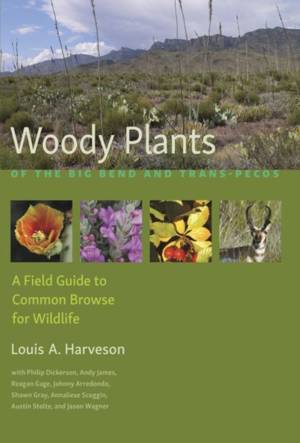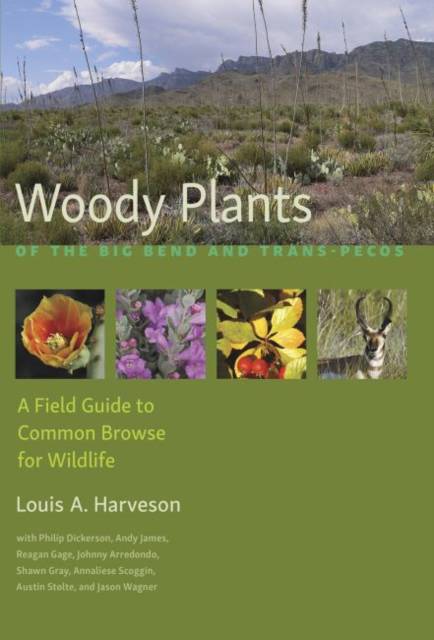
- Afhalen na 1 uur in een winkel met voorraad
- Gratis thuislevering in België vanaf € 30
- Ruim aanbod met 7 miljoen producten
- Afhalen na 1 uur in een winkel met voorraad
- Gratis thuislevering in België vanaf € 30
- Ruim aanbod met 7 miljoen producten
Zoeken
Woody Plants of the Big Bend and Trans-Pecos
A Field Guide to Common Browse for Wildlife
Louis A Harveson
€ 45,95
+ 91 punten
Omschrijving
Winner, 2018 Carroll Abbott Memorial Award, sponsored by the Native Plant Society of Texas
The Trans-Pecos region of Texas is home to a variety of big game species, including desert mule deer, pronghorn, desert bighorn sheep, white-tailed deer, elk, feral hog, and javelina; several species of exotics, such as aoudad, axis deer, and blackbuck antelope; and domestic livestock that includes cattle, horses, goats, sheep, and bison.
Prepared by a team of range specialists at the Borderlands Research Institute in Alpine, Texas, this field guide will allow the area's ranch managers, private landowners, resource professionals, students, and other outdoor enthusiasts to identify the key woody plants that serve as valuable forage for these animals.
Encompassing 18 West Texas counties, with application in like habitats in the western Hill Country and southern Rolling Plains as well as in northern Mexico and eastern New Mexico, the book provides a thorough introduction to the natural features of the region and descriptions, nutrition values, and management prescriptions for 84 species of browse plants.
In addition to informing readers about the diet of the region's large animals, this fully illustrated, user-friendly reference also intends to inspire the continued good stewardship of the land they inhabit.
The Trans-Pecos region of Texas is home to a variety of big game species, including desert mule deer, pronghorn, desert bighorn sheep, white-tailed deer, elk, feral hog, and javelina; several species of exotics, such as aoudad, axis deer, and blackbuck antelope; and domestic livestock that includes cattle, horses, goats, sheep, and bison.
Prepared by a team of range specialists at the Borderlands Research Institute in Alpine, Texas, this field guide will allow the area's ranch managers, private landowners, resource professionals, students, and other outdoor enthusiasts to identify the key woody plants that serve as valuable forage for these animals.
Encompassing 18 West Texas counties, with application in like habitats in the western Hill Country and southern Rolling Plains as well as in northern Mexico and eastern New Mexico, the book provides a thorough introduction to the natural features of the region and descriptions, nutrition values, and management prescriptions for 84 species of browse plants.
In addition to informing readers about the diet of the region's large animals, this fully illustrated, user-friendly reference also intends to inspire the continued good stewardship of the land they inhabit.
Specificaties
Betrokkenen
- Auteur(s):
- Uitgeverij:
Inhoud
- Aantal bladzijden:
- 224
- Taal:
- Engels
- Reeks:
Eigenschappen
- Productcode (EAN):
- 9781623493530
- Verschijningsdatum:
- 4/02/2016
- Uitvoering:
- Paperback
- Formaat:
- Trade paperback (VS)
- Afmetingen:
- 152 mm x 221 mm
- Gewicht:
- 476 g

Alleen bij Standaard Boekhandel
+ 91 punten op je klantenkaart van Standaard Boekhandel
Beoordelingen
We publiceren alleen reviews die voldoen aan de voorwaarden voor reviews. Bekijk onze voorwaarden voor reviews.








